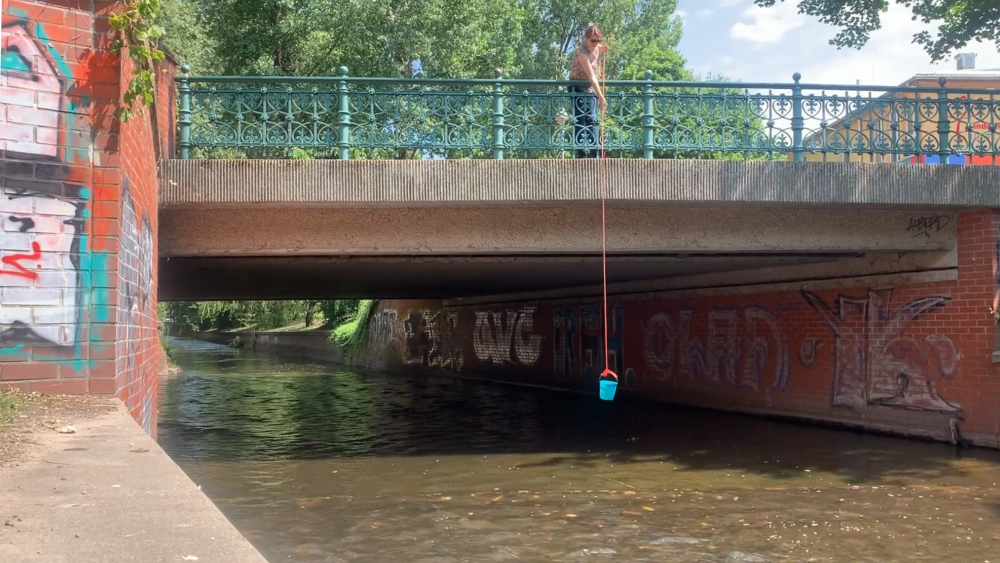
Sampling at the river Panke in Berlin. I Foto: IGB
The researchers studied the main water bodies and smaller rivers in Berlin through seasonal sampling and weekly spot checks. "Susceptibility to persistent drought and heavy rainfall varied greatly. This was due to the different sized catchment areas, but above all to the variable influence of sealed surfaces, rainwater and wastewater discharges," explains IGB’s doctoral student Lena-Marie Kuhlemann, first author of the study.
In the larger rivers Spree and Havel, seasonal differences in the flow regime were most common. In summer, high amounts of water evaporated from the water surface, which reduced stream discharge. In the isotope values measured in the urban part of the Spree and Havel, the researchers saw the influence of evaporation which had already taken place well before the city limits. The slow flow rates of both rivers – including passage through many lakes – played a major role. Evaporation losses in the dry summers of 2018 and 2019 continued to have an effect well into the autumn and winter, when even after prolonged rainfall, the flow rates of the Spree between January and May 2019 were still 23% lower than the long-term average.
Smaller, groundwater-fed urban rivers like the Wuhle showed more pronounced short-term changes: since the catchment area of the Wuhle is smaller and more urban in character, water flowed in from sealed surfaces and rainwater channels. Thus, the flow rate rose sharply during heavy rainfall events, causing short-term changes in the stream’s isotopic signature. Streams like the Erpe, which are characterised by the constant discharge of treated wastewater and are located in less urbanized catchments had more stable water levels and isotopic signals.
"While individual observations are specific to Berlin’s water system, the approach used here can be usefully transferred to other conurbations. Our study – which benefits from the combination of isotopic tracers with hydrogeochemical, climatic and hydrometric data – provides a complex insight into how urban water systems react to climate change," says Professor Dörthe Tetzlaff, summarizing the results of the study.
The IGB offers excellent scientific infrastructures for its own and external researchers. These include the ultra-modern isotope laboratory >
Read the article open access in Hydrological Processes >





